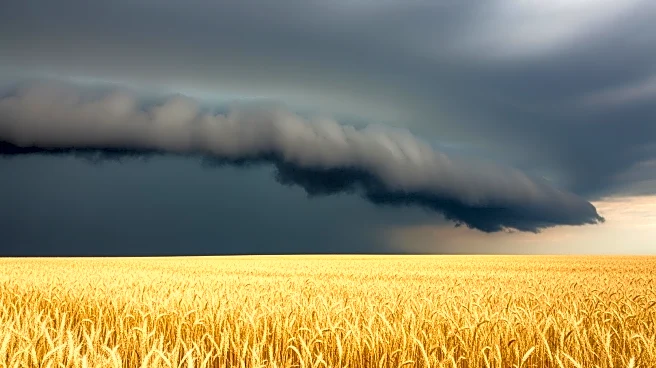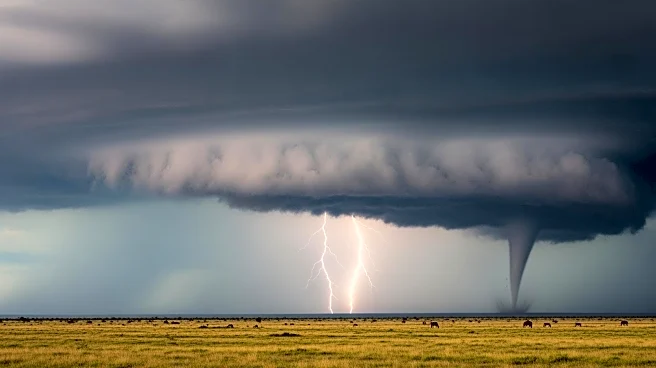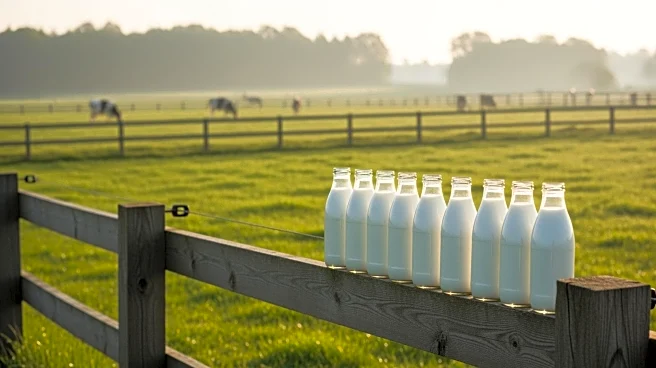What's Happening?
Recent weather forecasts indicate that conditions favorable for tornadoes and severe thunderstorms could persist in South Africa over the coming weeks. The past two weeks have seen tornado incidents in Mpumalanga and Gauteng, along with heavy lightning
strikes at God’s Window in Mpumalanga. Independent agricultural meteorologist Johan van den Berg reports that very windy conditions are contributing to severe lightning and tornado formation. The South African Weather Service confirmed a tornado in Germiston, and another was reported between Belfast and Middelburg.
Why It's Important?
The persistent stormy weather poses significant risks to South African agriculture, potentially affecting crop yields and livestock safety. Severe weather events can lead to property damage, disrupt farming operations, and increase costs for farmers. The agricultural sector, already facing challenges from economic pressures and market fluctuations, must now contend with the unpredictability of extreme weather. This situation underscores the need for effective weather forecasting and disaster preparedness strategies to mitigate the impact on agriculture.
What's Next?
Farmers and agricultural stakeholders will need to remain vigilant and prepared for ongoing severe weather conditions. The potential for continued storms may prompt discussions on improving infrastructure resilience and emergency response plans. The agricultural community may also seek support from government agencies to address the financial and operational challenges posed by the weather. Long-term strategies could include investing in climate-resilient farming practices and technologies.
Beyond the Headlines
The situation highlights the broader issue of climate variability and its impact on agriculture. As weather patterns become more unpredictable, there is a growing need for adaptive strategies in farming. The emphasis on resilience and sustainability in agriculture will likely increase, with a focus on reducing vulnerability to extreme weather events. This may also lead to greater collaboration between meteorologists, policymakers, and the agricultural sector to develop comprehensive climate adaptation plans.














